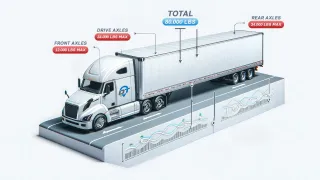
How to Become an Independent Truck Dispatcher
Just like every industry has a core professional, the truck dispatcher is the core professional of the transportation industry. Among other duties, the truck dispatcher, who is also known as the frei... ...more
Dispatcher
April 02, 2024•3 min read

Mastering Weight Management in Trucking: A Dispatcher's Tactical Guide
"My load's overweight on one axle" – Does this sound familiar? In the trucking industry, this is more than just a statement; it's a frequent challenge that dispatchers and industry professionals enco... ...more
Dispatcher
April 02, 2024•2 min read

The impact of technology on freight dispatching has been profound, transforming the industry in several key areas:
Modern technology, like Transportation Management Systems (TMS), automates many aspects of freight dispatching. These systems optimize routing, load planning, and carrier selection, which improves eff... ...more
Dispatcher
April 02, 2024•2 min read

Next-Gen Trucking: Are You Ready for the 2024 Revolution?
In the ever-pulsating heart of the global economy lies the trucking industry, a sector that experienced a rollercoaster of changes in 2023. The past year wasn't just about survival; it was about adapt... ...more
Dispatcher
April 02, 2024•3 min read

Carrier Search in Under 5 Minutes - Without Spending a Dime!
Imagine a scenario where, in the time it takes to brew your morning coffee, you've already identified several potential carriers for your trucking business. Sounds like a dream? It's not. Today, we're... ...more
Dispatcher
April 02, 2024•2 min read

Navigating Growth in the Flatbed Sector: Insights from Gary's Steel Mills
In the dynamic arena of flatbed transportation, certain regions stand out for their substantial contributions. One such area is the southern coast of Lake Michigan, home to one of North America's mos... ...more
Dispatcher
April 02, 2024•3 min read
